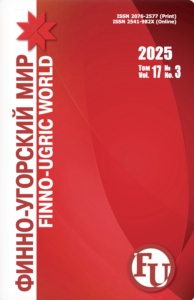Original article
DOI: 10.15507/2076-2577.014.2022.03.293-303
School in the socio-cultural space of the village (on the example of a school in the village of Novye Verkhissy of Insarsky district of the Republic of Mordovia in 1920–1980)
Olga V. Koshina
National Research Mordovia State University,
Saransk, Russia
Introduction. The relevance of this topic is due to the ambiguity of the course of modern educational processes in the context of the transformation of socio-cultural realities. The school as an educational and social institution is looking for new mechanisms of education and upbringing in a dynamically developing information, social and cultural space.
Materials and Methods. The sources for the study were both unpublished materials of the Central State Archive of the Republic of Mordovia and published documents, in particular, legislative acts of the Soviet government in the field of education. The theoretical strategy of the study was a sociocultural approach to the history of secondary school education, micro-educational phenomena were considered against the background of macro-educational processes. The school was studied as a social institution. The anthropological perspective of the study helped to reveal the features of behavioral strategies and relationships of specific people in the educational environment. The analysis was carried out within the framework of the “history of everyday life”, in the context of the “psychological reality of the past”.
Results and Discussion. The study showed that the features of school life were determined by the socio-cultural and ethno-cultural realities of the era: the official ideology, the traditional system of values and relationships between people in a multi-ethnic environment. The school was one of the important social institutions which carried out the continuity of generations and manifested social solidarity.
Conclusion. The Soviet school translated the norms and values of the socio-cultural system. It contributed to the socialization of children, preserved the traditions of the education based on values of labor, the family type of relationships between pupils and teachers, the continuity of generations and national traditions.
Keywords: school, teacher, library, social institution, values, education, ideology, authority, labor education, socio-cultural approach
For citation: Koshina OV. School in the socio-cultural space of the village (on the example of a school in the village of Novyye Verkhissy of Insarsky district of the Republic of Mordovia in 1920–1980). Finno-ugorskii mir = Finno-Ugric World. 2022;14;3:293–303. (In Russ.). DOI: 10.15507/2076-2577.014.2022.03.293-303.
Information about the author
O. V. Koshina – Candidate Sc.{History}, Associate Professor, Department of Russian History, National Research Mordovia State University, koshinaolga@rambler.ru, http://orcid.org/0000-0001-9558-4173






















